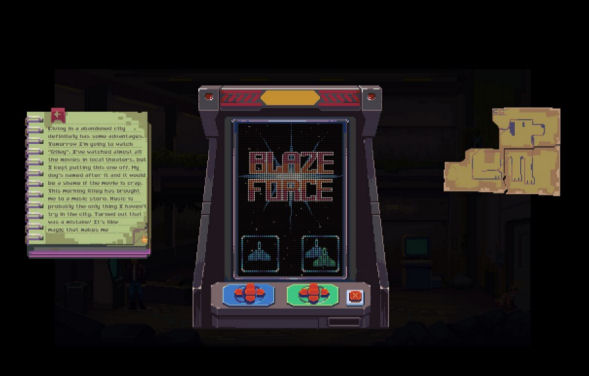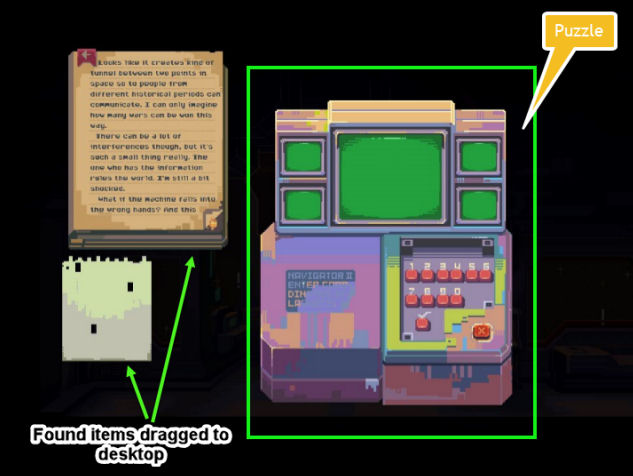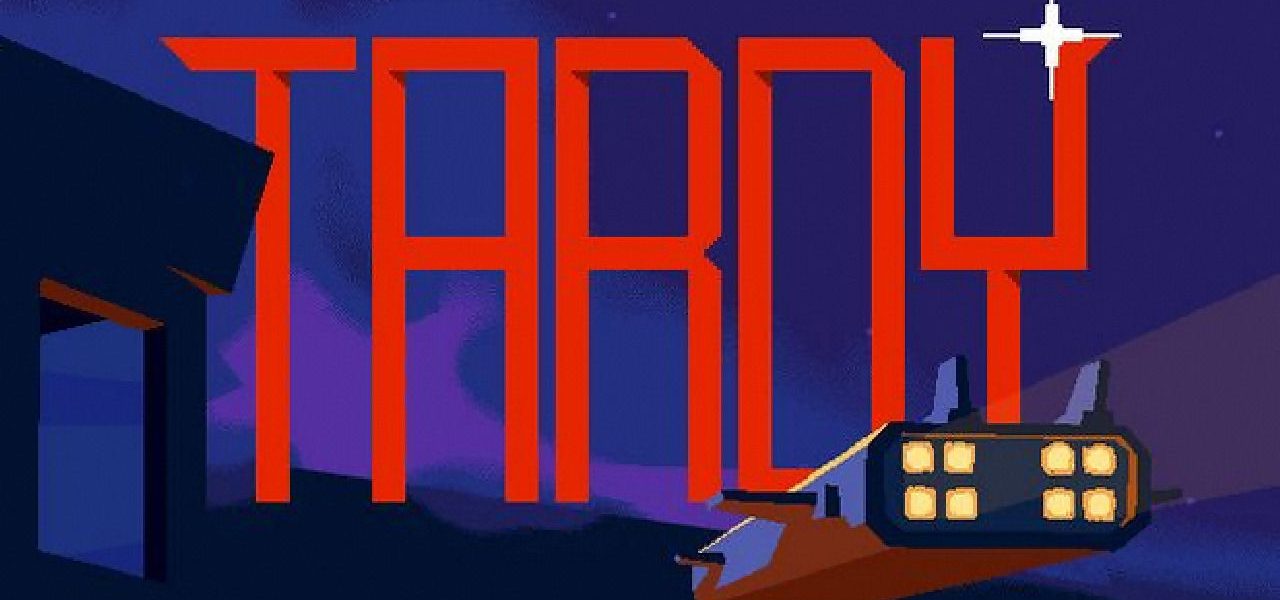Tardy Review
An interesting adventure with a unique interface for those who enjoy a challenge. Tardy is filled with technology puzzles that require some serious thinking







One Wing Cicada is a small development team from Minsk, Belarus (for those who cannot remember their world geography, Belarus sits between Poland and Russia, with Ukraine to the south). They are gamers with a dream of making “cool, spiritual games with interesting stories and unique gameplay ideas.” Described as “a story driven space adventure about war, emotions, love and passion for old computer devices,” Tardy is their first release.
The story centers on Ramto – a not-too-technical guy who has woken from cryo-sleep and found himself on the “Wall” spaceship. He is not sure where he is or why he is there. To make matters worse, he soon discovers that he is alone. Well, he is almost alone. Ann, a female crew member, is on board but locked in the cargo hold with her exit blocked by hostile robots. She and Ramto stay in radio contact throughout the game as he searches for a way to rescue her, repair the ship, and head home.
The Wall was designed by an engineer with a penchant for puzzles so Ramto is confronted by technical challenges every step of the way. Other than guidance from Ann and limited assistance from a dog, he is on his own to figure out how equipment works and what is required for basic tasks like opening doors, running elevators, and accessing the ship’s logs. He discovers that he has a shortage of spare parts so he takes an excursion to scavenge on the planet Despair and the ruined spaceship “Kentucky.”
Throughout his quest, Ramto is faced with a moral dilemma. When the spaceship is finally ready for travel, does he head for home (his choice)? Or, does he “do the right” thing and take Ann to save her family on the planet Vironia? He continues to weigh this decision as his virtual relationship with Ann deepens over time. In the end, you’ll have to play Tardy to see how things turn out!
Tardy is presented in 2D with limited animation. The interface is pixelated but is presented with a high enough resolution that it is not “fuzzy.” The story is complicated, with a lot of dialog between Ramto and Ann. They share personal histories, past tragedies, current likes/dislikes, etc. There are no voice-overs so you are free to click through at your own pace. At times, I felt like it was simply “too much information.” However, Ann often imparts helpful clues so one must be careful not to click through too fast.
What makes Tardy unique is its puzzles. There are many of them and all relate to using technology. There are switches to flip, keypad combinations to discern, elevator codes to find, and computers to hack. You will find some familiar puzzles, although they are presented in unique ways (connecting pipes, switching color positions, etc.). You will also have the chance to prove yourself in three classic arcade games that must be won to progress in the story. Other than assorted equipment manuals, there is little in the way of instructions. Before solving a puzzle in Tardy, you must first figure out what it is you are trying to accomplish. This is not always as easy as one might think.

One Winged Cicada designed the game in a way that eliminates inventory and backtracking. Every scene stands on its own. In other words, everything you need to solve all puzzles in a specific scene is available within that scene. You do not have to wonder what you might have missed and spend hours traversing previous locations “just in case.” You are also saved from pixel-hunting, as active areas are marked with an exclamation point.
The feature that I liked the most is the way found items are handled. Objects can be dragged to be displayed as part of your workspace. For example, if you find an operating manual in a drawer, you can drag it out of the drawer and put it on your game desktop. It remains visible when you close the drawer and you can look at it as a reference while you are solving a related puzzle. Some objects on your screen are there just for reference, while others can be physically used (like a flashlight or a remote control). Once you leave a scene, objects related to that scene disappear. Most puzzles occupy a relatively small amount of screen space so there is plenty of room to arrange the objects you’ve found.

I truly enjoyed playing Tardy. Except for two puzzles, I found my way through the game with only limited head banging and felt a sense of accomplishment as solutions came to me. It took me about 7 hours to play through, with over two of those hours focused on a couple of puzzles with solutions that eluded me. In the end, the “problem” was in my chair and not in Tardy! At the time of this writing, there is not a walkthrough available. This, coupled with the fact that much of the Steam discussion board for the game is in Russian, means that you must face the challenges on your own.
Grade: B+
|
+ Interesting puzzles that require thinking “out of the box”
+ “Desktop” inventory and self-contained scenes streamline game play and eliminate traditional adventure pitfalls
– Character dialog wears thin at times
– While none of the puzzles is “unfair,” some are quite difficult to figure out. This may not be the best choice for the lazy gamer!
|
 |
System Requirements
Processor: 2 GHz


Leave a Reply